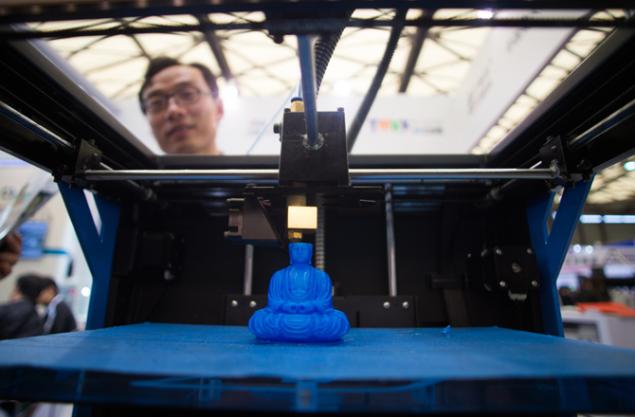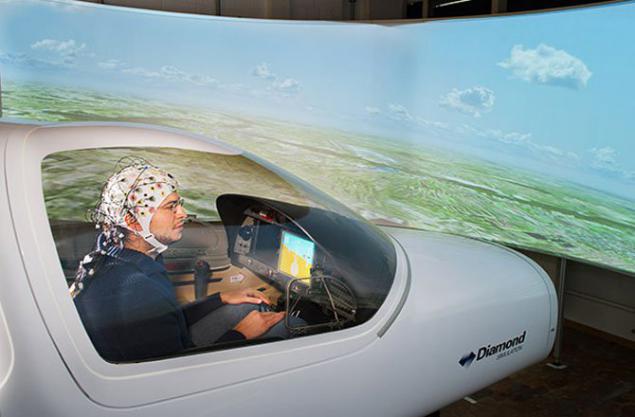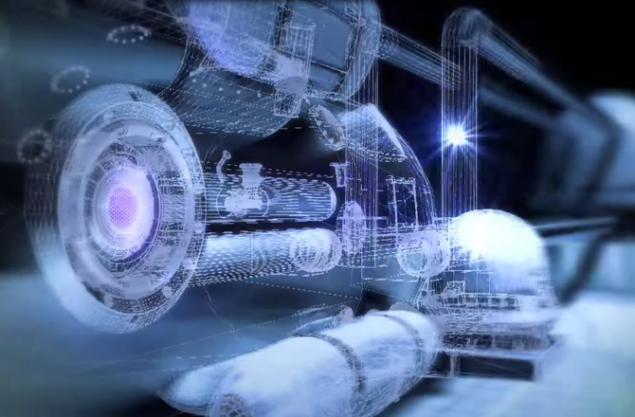10 Incredible Technologies, which exploded in 2014.
 Bashny.Net
Bashny.Net
Some technologies such as solar power, known to us more than a year, experienced the most powerful breakthroughs this year; the other, which you've heard - quantum teleportation, for example - have become better. Let's go through the list of significant technology of the outgoing 2014.
Solar energiya
Report US Department of Energy says the following: "2014 marks an important milestone in the history of the American Solar Energy." Five new solar power plants (three in California, one in Nevada and one in Arizona) earned in 2014. As from abroad comes to us all a little late, we can congratulate overseas counterparts and hope that to us pure energy, too, will come gradually.
The world's largest solar power plant earned earlier this year in the Mojave Desert (California) and started to produce 392 megawatts of energy; It's enough to electrify 140,000 homes.
Solar energy - and this is also worth noting - dropped significantly in price. Advances in technologies which are the basis of solar panels, increased production plan in China - all this gradually leads to the fact that renewable energy is becoming increasingly competitive with natural gas, especially against the background of falling prices for fossil fuels. According to Forbes, the full cycle of unsubsidized solar power costs about 13 cents per kilowatt-hour, while the energy of advanced coal-fired power plants - 12 cents per kilowatt-hour.
Not a surprise, and the increase in production of electricity by solar power. As of September 2014 the volume of production of solar energy in the United States amounted to 15, 9 gigawatts of installed capacity, enough to supply electricity to 3, 2 million homes, writes Forbes. This is two times more than it was in 2013.
Efficiency is also growing. This year, scientists from the University of New South Wales set a record by creating solar cells that convert 46% of solar energy into electricity - the highest conversion today.
This year has been good for solar energy, and it will not last. Solar energy will gradually fall in price and rise in production volumes. The day will come when we will cease to burn coal and gas for the light in their homes.
3-D Pechat
This year was also rich in news from the sphere of 3D-printing, which is spreading throughout the world "mysyu on the tree." If you do not know, 3D-printers use plastic instead of viscous ink for printing. Working with a digital file, 3D-printer builds a three-dimensional object layer by layer printing it. Once the "ink" dries, it hardens object.
In the past, the technology used to print almost anything you can imagine: chairs, clothes, drones, cars, sex toys, home electronics, such as part of the biological prostheses and parts of the skull, and even food.
Three-dimensional printing even went into space. Last summer, the first 3D-printer is designed to print in microgravity, was delivered to the International Space Station, and in November was the first printed object. In the future, printed components or even food, which can be printed in space, will facilitate the uploading spacecraft - will be enough to printers' ink ».
Augmented realnost
Add graphics, sounds, touch, or even the illusion of smell in your world - and you will get augmented reality. Google Glass, which is applied on top of the graphics world through lenses - just one example. Since the advent of Google's glasses in public, augmented reality is gaining popularity. Although, of course, its growth is experiencing some stagnation at a certain point: the world stood before jumping into the world of augmented and virtual reality.
Recently, Jaguar Land Rover announced the use of the technology overlay graphics on the windshield, which will provide not only the navigation information, but also data on pedestrians or other cars that the driver can not see. A similar technology will also be on display in retail stores, allowing customers to try on clothes virtually.
Motorcycle helmet created Fusar Technologies, the system includes a display worn on the head, video recording functions and voice control. You can even buy the mask for scuba diving, which is equipped with a built-in display pointer dive time, depth, water temperature, and more.
Neurocomputing interfeysy
What are you thinking about? Scientists are getting better and better interpret brain signals and convert them into computer commands. Not so long ago, scientists found a way by which one can control the cursor on the screen by thought. Since then, science has progressed.
In May, a team of the Institute of flight dynamics systems and the Berlin Institute of Technology has developed a technique that allowed the pilot to accurately control the aircraft in a simulator without touching the levers and a steering wheel.
Flight simulator - it was good and fun, but there are more noble ways of using brain-computer interface. More specifically, control of the prosthesis that is connected to the human nervous system. So-called neuroprosthesis becoming more and more sophisticated, provide people with disabilities the opportunity to move artificial limbs as if they were natural.
In October, two groups of scientists - Case Western Reserve University in Cleveland and Chalmers University in Sweden - reported success: they have taught two patients with prosthetic limbs gently grasp objects and even "feel" the texture of those objects.
Brain-computer interface was also designed by scientists and Ohio to help paralyzed man to move by hand using their own thoughts. The scientists implanted a computer chip in the human brain and neural bridge then used to redirect the brain signals to the sleeve, which transmits electrical signals to the forearm and the hand of man. After some practice, the person was able to control the arm by thought.
If this is not enough, the Japanese manufacturer announced in the exoskeletons Cyberdyne this year, working on the exoskeleton, which will allow people to walk, determining the electrical impulses in the human body, when the brain will send a signal carrier to move limbs.
But most probably the loudest event in the field of the outgoing year was in Brazil at the opening World Cup Games, when a man with a paraplegic, using the power of thought-controlled exoskeleton made the first blow.
Ekzoskelety
Since we are talking about the exoskeleton, let's continue. This year, the US military reported costume TALOS. This suit protects the wearer from bullets, allows him to lift weights and comes with an arsenal of technologies that monitor the environment. This suit - not only for the military.
Workers shipbuilding company Daewoo Shipbuilding and Marine Engineering began wearing exoskeletons that help them to lift heavy things. Similar manipulators have been developed by scientists at MIT: warehouse workers can lift heavy loads alone.
Also this year, it was announced a new competition called Cybathlon. The point is that taking part in it, people with disabilities, with the assistance of advanced technologies such as robotic limbs and exoskeletons. Competitions are held with support of ETH Zurich and the Swedish National Research Center of robotics. The first event will be held in 2016.

Wearable technology, namely the trackers activity - like fitness bracelets - strengthened its position in the consumer market. If last year they had little choice, this year the choice is huge. Basic Peak, FitBit, Garmin, Jawbone, Microsoft, Fitbit Flash - the list goes on.
What is interesting in all this, because it is not an option, and the data collected by these bracelets. For the first time scientists have been able to get a ton of information about how people move during the day, from small to large. Gone are the polls, which were scientists with pen and paper, separately measuring the parameters of each individual - are now at their disposal exact data is actually collected by the sensors. Now you can analyze how people move, sleep, stand, lie and stuff.
It is curious that while not everyone knows what to do with this array of accurate data. It may help artificial intelligence and machine learning deeper?
Quantum vychisleniya
Research in the field of quantum computing is in its infancy. But in 2014 we heard some buzz, beeps and electronic sounds coming from the room with a quantum computer.
It all started with the data presented by Edward Snowden, who reported that the NSA is building a "cryptologic useful quantum computer." Such a computer would be much faster than any supercomputer, known to mankind, and it would be impossible to break through the laws of quantum mechanics.
Also, we have learned this year that the NSA is not only working hard to create such a computer. In September, Google hired physicist John Martinis and his team from the University of California for the development of quantum computing chips. In the past, Google has already funded a study D-Wave Systems, a Canadian company that has acquired the machine with quantum properties. And Microsoft has launched a new group of designers quantum hardware this year, led by Burton Smith, a well-known designer of supercomputers.
But the most interesting news came from a team of scientists from the University of Geneva, the Jet Propulsion Laboratory of NASA and the National Institute of Standards and Technology. In December, they announced that teleported the quantum state of a particle of light - that is the direction in which it rotates - 25 kilometers of optical fiber, thus setting a new distance record of successful quantum teleportation.
Thermonuclear sintez
Fusion energy is a long time in the field of research, which for decades has always lag behind reality. But if it came at us, the planet would get unlimited and clean energy.
Also this year has been very interesting and very mysterious announcement from Lockheed Martin. The scientists of the company, well known in the market of high technologies, reported that they could create a reactor that is small enough to fit on the roof of the truck, but who will be able to give out 100 megawatts of electricity.
Scientists say that within a year they will build a working prototype, and in ten years - a reactor that can be placed on the truck.
Maskirovka
Masking technology go hand in hand with science, but remain essentially fiction. We have evil Romulans from the "Star Trek" that can hide their spaceships; we have an invisibility cloak of Harry Potter, which makes the vehicle invisible. In science, however, such masking technologies are still a novelty.
Until this year, the majority of scientists have already achieved some success on the part of the cover-up objects from the light spectrum invisible to the human eye. They have found ways to cover three-dimensional objects from electromagnetic waves, sound, magnetic field, and even make the whole city resistant to seismic waves of earthquakes.
However, this year we have finally learned something new. Scientists from the University of Rochester used a relatively inexpensive components to hide an object in the visible spectrum. Instead of using expensive "metamaterials", which are pinning their hopes other scientists, John Howell, a professor of physics at the University of Rochester, was able to unite the four optical lenses to bend light and send it through the center. Not perfect, but to solve complex problems in a simple way.
Floating zdaniya
Glaciers are melting, global warming is inevitable temperature increases that will save us? Floating house. This year we have seen floating farms that irrigate the crop melted ice; swimming beaches for New York; floating nuclear plant to be resistant to tsunamis, and underwater cities.
Architectural firm based in the Netherlands, Waterstudio, a leader in this field. The company came up with a number of different concepts, including a dwelling house, hotel complex for low-income people, and even a nature reserve.
Solar energiya

Report US Department of Energy says the following: "2014 marks an important milestone in the history of the American Solar Energy." Five new solar power plants (three in California, one in Nevada and one in Arizona) earned in 2014. As from abroad comes to us all a little late, we can congratulate overseas counterparts and hope that to us pure energy, too, will come gradually.
The world's largest solar power plant earned earlier this year in the Mojave Desert (California) and started to produce 392 megawatts of energy; It's enough to electrify 140,000 homes.
Solar energy - and this is also worth noting - dropped significantly in price. Advances in technologies which are the basis of solar panels, increased production plan in China - all this gradually leads to the fact that renewable energy is becoming increasingly competitive with natural gas, especially against the background of falling prices for fossil fuels. According to Forbes, the full cycle of unsubsidized solar power costs about 13 cents per kilowatt-hour, while the energy of advanced coal-fired power plants - 12 cents per kilowatt-hour.
Not a surprise, and the increase in production of electricity by solar power. As of September 2014 the volume of production of solar energy in the United States amounted to 15, 9 gigawatts of installed capacity, enough to supply electricity to 3, 2 million homes, writes Forbes. This is two times more than it was in 2013.
Efficiency is also growing. This year, scientists from the University of New South Wales set a record by creating solar cells that convert 46% of solar energy into electricity - the highest conversion today.
This year has been good for solar energy, and it will not last. Solar energy will gradually fall in price and rise in production volumes. The day will come when we will cease to burn coal and gas for the light in their homes.
3-D Pechat

This year was also rich in news from the sphere of 3D-printing, which is spreading throughout the world "mysyu on the tree." If you do not know, 3D-printers use plastic instead of viscous ink for printing. Working with a digital file, 3D-printer builds a three-dimensional object layer by layer printing it. Once the "ink" dries, it hardens object.
In the past, the technology used to print almost anything you can imagine: chairs, clothes, drones, cars, sex toys, home electronics, such as part of the biological prostheses and parts of the skull, and even food.
Three-dimensional printing even went into space. Last summer, the first 3D-printer is designed to print in microgravity, was delivered to the International Space Station, and in November was the first printed object. In the future, printed components or even food, which can be printed in space, will facilitate the uploading spacecraft - will be enough to printers' ink ».
Augmented realnost

Add graphics, sounds, touch, or even the illusion of smell in your world - and you will get augmented reality. Google Glass, which is applied on top of the graphics world through lenses - just one example. Since the advent of Google's glasses in public, augmented reality is gaining popularity. Although, of course, its growth is experiencing some stagnation at a certain point: the world stood before jumping into the world of augmented and virtual reality.
Recently, Jaguar Land Rover announced the use of the technology overlay graphics on the windshield, which will provide not only the navigation information, but also data on pedestrians or other cars that the driver can not see. A similar technology will also be on display in retail stores, allowing customers to try on clothes virtually.
Motorcycle helmet created Fusar Technologies, the system includes a display worn on the head, video recording functions and voice control. You can even buy the mask for scuba diving, which is equipped with a built-in display pointer dive time, depth, water temperature, and more.
Neurocomputing interfeysy

What are you thinking about? Scientists are getting better and better interpret brain signals and convert them into computer commands. Not so long ago, scientists found a way by which one can control the cursor on the screen by thought. Since then, science has progressed.
In May, a team of the Institute of flight dynamics systems and the Berlin Institute of Technology has developed a technique that allowed the pilot to accurately control the aircraft in a simulator without touching the levers and a steering wheel.
Flight simulator - it was good and fun, but there are more noble ways of using brain-computer interface. More specifically, control of the prosthesis that is connected to the human nervous system. So-called neuroprosthesis becoming more and more sophisticated, provide people with disabilities the opportunity to move artificial limbs as if they were natural.
In October, two groups of scientists - Case Western Reserve University in Cleveland and Chalmers University in Sweden - reported success: they have taught two patients with prosthetic limbs gently grasp objects and even "feel" the texture of those objects.
Brain-computer interface was also designed by scientists and Ohio to help paralyzed man to move by hand using their own thoughts. The scientists implanted a computer chip in the human brain and neural bridge then used to redirect the brain signals to the sleeve, which transmits electrical signals to the forearm and the hand of man. After some practice, the person was able to control the arm by thought.
If this is not enough, the Japanese manufacturer announced in the exoskeletons Cyberdyne this year, working on the exoskeleton, which will allow people to walk, determining the electrical impulses in the human body, when the brain will send a signal carrier to move limbs.
But most probably the loudest event in the field of the outgoing year was in Brazil at the opening World Cup Games, when a man with a paraplegic, using the power of thought-controlled exoskeleton made the first blow.
Ekzoskelety

Since we are talking about the exoskeleton, let's continue. This year, the US military reported costume TALOS. This suit protects the wearer from bullets, allows him to lift weights and comes with an arsenal of technologies that monitor the environment. This suit - not only for the military.
Workers shipbuilding company Daewoo Shipbuilding and Marine Engineering began wearing exoskeletons that help them to lift heavy things. Similar manipulators have been developed by scientists at MIT: warehouse workers can lift heavy loads alone.
Also this year, it was announced a new competition called Cybathlon. The point is that taking part in it, people with disabilities, with the assistance of advanced technologies such as robotic limbs and exoskeletons. Competitions are held with support of ETH Zurich and the Swedish National Research Center of robotics. The first event will be held in 2016.

Wearable technology, namely the trackers activity - like fitness bracelets - strengthened its position in the consumer market. If last year they had little choice, this year the choice is huge. Basic Peak, FitBit, Garmin, Jawbone, Microsoft, Fitbit Flash - the list goes on.
What is interesting in all this, because it is not an option, and the data collected by these bracelets. For the first time scientists have been able to get a ton of information about how people move during the day, from small to large. Gone are the polls, which were scientists with pen and paper, separately measuring the parameters of each individual - are now at their disposal exact data is actually collected by the sensors. Now you can analyze how people move, sleep, stand, lie and stuff.
It is curious that while not everyone knows what to do with this array of accurate data. It may help artificial intelligence and machine learning deeper?
Quantum vychisleniya

Research in the field of quantum computing is in its infancy. But in 2014 we heard some buzz, beeps and electronic sounds coming from the room with a quantum computer.
It all started with the data presented by Edward Snowden, who reported that the NSA is building a "cryptologic useful quantum computer." Such a computer would be much faster than any supercomputer, known to mankind, and it would be impossible to break through the laws of quantum mechanics.
Also, we have learned this year that the NSA is not only working hard to create such a computer. In September, Google hired physicist John Martinis and his team from the University of California for the development of quantum computing chips. In the past, Google has already funded a study D-Wave Systems, a Canadian company that has acquired the machine with quantum properties. And Microsoft has launched a new group of designers quantum hardware this year, led by Burton Smith, a well-known designer of supercomputers.
But the most interesting news came from a team of scientists from the University of Geneva, the Jet Propulsion Laboratory of NASA and the National Institute of Standards and Technology. In December, they announced that teleported the quantum state of a particle of light - that is the direction in which it rotates - 25 kilometers of optical fiber, thus setting a new distance record of successful quantum teleportation.
Thermonuclear sintez

Fusion energy is a long time in the field of research, which for decades has always lag behind reality. But if it came at us, the planet would get unlimited and clean energy.
Also this year has been very interesting and very mysterious announcement from Lockheed Martin. The scientists of the company, well known in the market of high technologies, reported that they could create a reactor that is small enough to fit on the roof of the truck, but who will be able to give out 100 megawatts of electricity.
Scientists say that within a year they will build a working prototype, and in ten years - a reactor that can be placed on the truck.
Maskirovka

Masking technology go hand in hand with science, but remain essentially fiction. We have evil Romulans from the "Star Trek" that can hide their spaceships; we have an invisibility cloak of Harry Potter, which makes the vehicle invisible. In science, however, such masking technologies are still a novelty.
Until this year, the majority of scientists have already achieved some success on the part of the cover-up objects from the light spectrum invisible to the human eye. They have found ways to cover three-dimensional objects from electromagnetic waves, sound, magnetic field, and even make the whole city resistant to seismic waves of earthquakes.
However, this year we have finally learned something new. Scientists from the University of Rochester used a relatively inexpensive components to hide an object in the visible spectrum. Instead of using expensive "metamaterials", which are pinning their hopes other scientists, John Howell, a professor of physics at the University of Rochester, was able to unite the four optical lenses to bend light and send it through the center. Not perfect, but to solve complex problems in a simple way.
Floating zdaniya

Glaciers are melting, global warming is inevitable temperature increases that will save us? Floating house. This year we have seen floating farms that irrigate the crop melted ice; swimming beaches for New York; floating nuclear plant to be resistant to tsunamis, and underwater cities.
Architectural firm based in the Netherlands, Waterstudio, a leader in this field. The company came up with a number of different concepts, including a dwelling house, hotel complex for low-income people, and even a nature reserve.
Tags
See also
The most futuristic predictions that came true in 2014
10 technologies that should be remembered in 2015
The UPS and downs of the global space industry in 2014
The challenge and opportunities that we receive in connection with a Solar Eclipse on October 23 2014
Winners of the Ig Nobel Prize in 2014
Phenomena, things and people that will forever remain in 2014
Worst Gadgets 2014 according to Engadget
Literary fiction trends in 2014. How to fill up a home library fiction
As Malaysia Airlines plane could disappear without a trace in 2014
10 books in 2014, which is worth reading
















